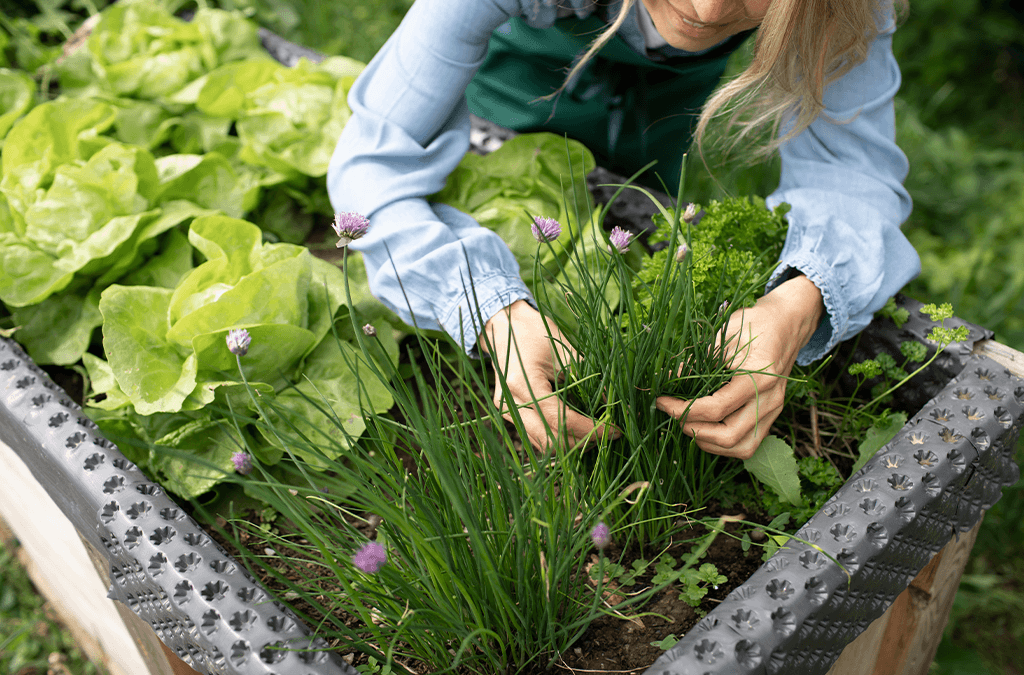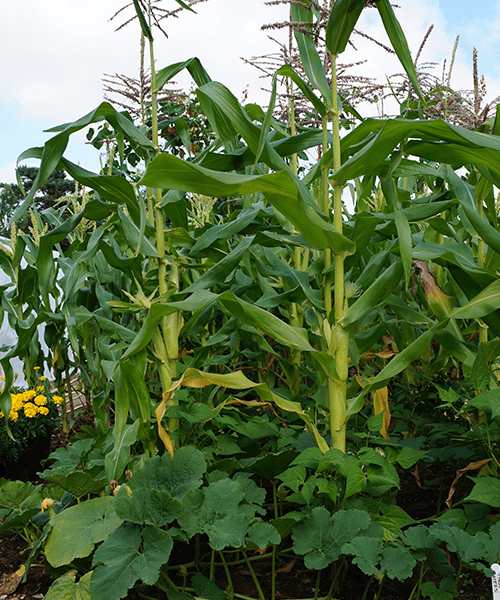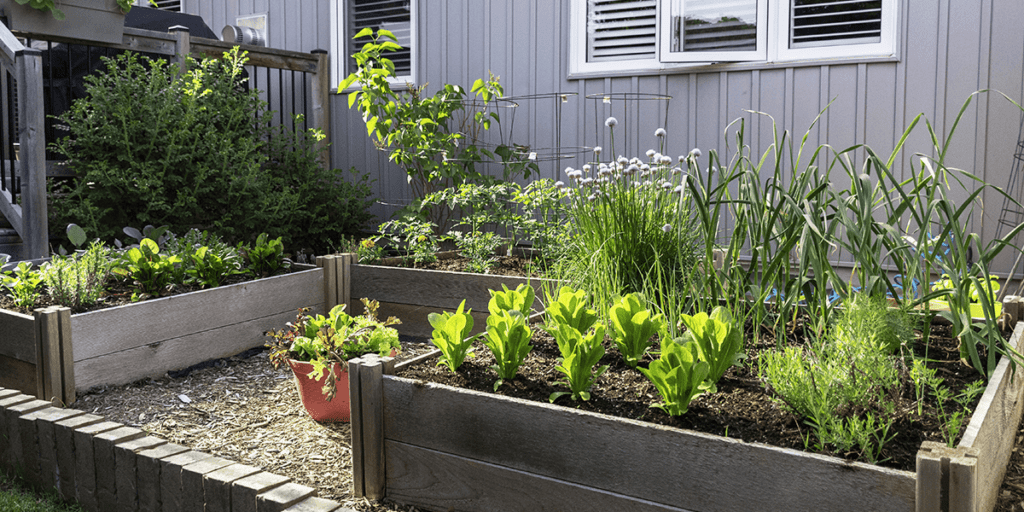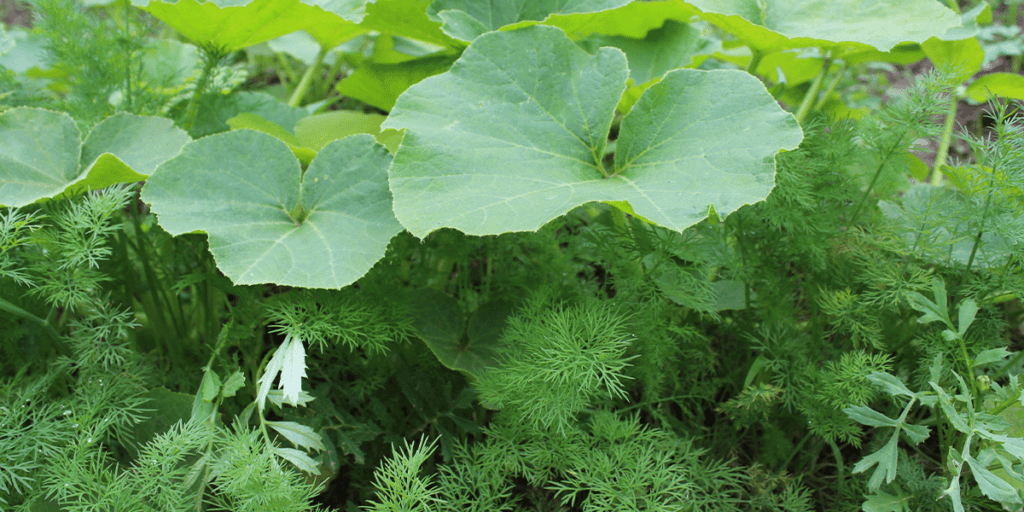In nature, plants grow in communities, but we often treat them as individuals in our gardens. When we learn how to grow them together, we can take advantage of their natural harmonies, boost the strength of each plant, and make our whole garden sing. Here’s a guide to companion planting!
How Does Companion Planting Work?
A plant can benefit from a well-chosen neighbor in many ways, including protection from pests, more nutrients in the soil, a structure to climb on, provided shade, and an increase in pollinators or other friendly insects.
One of the strongest examples of companion planting is corn, beans, and squash, also known as The Three Sisters. The corn gives the beans a pole to climb on; the beans deposit nitrogen in the soil for the other plants, while the squash shades the soil, keeps moisture in and suppresses weeds.
Companion Planting Guide for Vegetables
The Three Sisters is not the only example of companion planting. Almost every vegetable does better when grown with particular neighbors. Once you know about their friendships, you can unlock the hidden synergies between them:
- Beets: grow well together with bush beans, brassicas, lettuce, mint, and garlic. Plus, beet greens in your compost benefit your soil by returning manganese and iron.
- Brassicas: broccoli, kale, Brussels sprouts, cabbage, cauliflower, collards, kohlrabi, and turnips all benefit from the companionship of chamomile, dill, mint, rosemary and sage. They don’t grow well with tomatoes and potatoes.
- Carrots: benefit from the presence of brassicas, chives, lettuce, onions, peas, peppers, pole beans, radish, rosemary, sage, and tomatoes. They compete with dill, parsnips, and potatoes.
- Lettuce: a worthy companion for brassicas, beets, celery, carrots, cucumber, radish, spinach, and strawberries.
- Onions: have a mutually beneficial relationship with cabbage and other brassicas. They also thrive alongside carrots, dill, lettuce, and tomatoes, but clash with asparagus and peas.
- Peas: excellent neighbors for turnips, spinach, strawberries, peppers, potatoes, radish, carrots, cucumber, and eggplant. They’re antagonistic to onions.
- Potato: make a great companion to peas, onions, garlic, celery and bush beans, but disturb carrots, brassicas, parsnips, sunflowers, turnips, and squash.
- Tomatoes: thrive close to asparagus, beans, carrots, collards, lettuce, garlic, and especially basil, which improves their flavor and repels pests. Keep tomatoes away from brassicas, dill, corn, and potatoes.
Companion Planting Guide for Herbs and Flowers
- Borage: this beautiful blue flower benefits your whole vegetable garden by repelling tomato hornworm, cabbage moth caterpillars, attracting pollinators, and improving soil and compost.
- Clover: helps build the soil, attracts beneficial insects, repels cabbage worms, and boosts the number of good, predatory beetles.
- Dill: is one of the best companion herbs for the whole garden, as they attract many beneficial insects, like ladybugs, hoverflies, bees, and garden spiders. They also boost the health of brassicas, especially cabbage.
- Nasturtiums: attract pollinators with their big flowers, and act as a trap crop for aphids. They make good neighbors for brassicas, tomatoes, radish, and cucumbers.
- Mint: is a magnet for predatory wasps, hoverflies, and earthworms. It also repels flea beetles, aphids and cabbage moths.
How Close Does A Companion Plant Need To Be?
A plant that repels pests needs to be quite close to the plant you’re protecting. Plants that attract beneficial insects, like dill, can be placed anywhere in the garden. In general, companion plants should be as close as possible while still maintaining the proper spacing guidelines on the seed package.
Guide for Seeding and Transplanting
If you’ve just seeded a bed, wait until the seedlings sprout before you transplant any companion plants around it. That way, you won’t disturb the germinating seeds. In general, it helps to plan your companion plantings ahead of time so you can start your seeds indoors at the right time.
If you want to learn more about specific plants, feel free to visit our garden centers!
Platt Hill Nursery is Chicago’s premier garden center and nursery.





